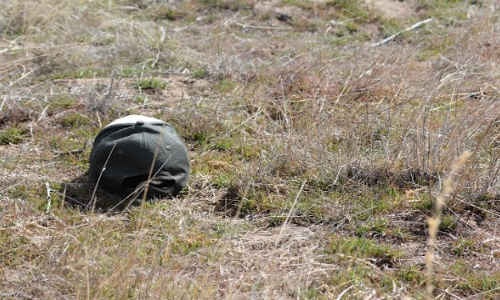By Ben Beckman and Mitch Stephenson
While Mother Nature has been giving us small tastes of spring, then pulling right back, the reminder that pasture green up is just around the corner shouldn’t be ignored. One of the earliest species we see greening up is cheatgrass (also called Downy brome, Bromus tectorum). This invasive species is found throughout Nebraska but is most prevalent on rangelands in the western portion of the state. Early spring is a good time to begin planning for cheatgrass management.
Winter annuals like cheatgrass germinated and grew last fall. The seedling was dormant all winter but energy reserves from the fall allow for growth right away this spring. This mechanism allows cheatgrass to invade into several different plant communities and compete with native cool-season perennials. With warm spring temperatures, plants grow rapidly and mature quickly. Cheatgrass usually reaches reproductive maturity by May or early June.
Cheatgrass grows from 6-24 inches in height and will be a bright green until seeds set (Figure 1.). Upon maturity, plants turn red brown in color (Figure 2). Leaves are covered with fine, soft hairs. Each plant produces a distinctive brome seed head that is 2-6 inches in length and droops to one side. The seed head gets a more fluffy appearance as awns dry. Dried seed heads stick to animal hair and fur, or human clothing as a method of seed dispersal. They are also really good at burrowing into socks and shoes. Due to the seed being so easily transported, care should be taken to reduce spread from one location to areas without cheatgrass. This could include moving cattle away from cheatgrass prone pastures before seed maturity to reduce transport.

Figure 1. Cheatgrass growth early in the growing season.

Figure 2. A cheatgrass dominated site with cheatgrass beginning to turn from green to purple as it reached reproductive maturity.
Cheatgrass can be very invasive, taking advantage of disturbed sites and creating a monoculture where it out competes other plants for nutrients due to its early growth and maturity. Once mature, the seed head contains awns that can cause irritation for animals grazing or eating cheatgrass contaminated hay. Dead plants can also create a fire risk, being a fine, dry fuel source just waiting to catch a spark.
While mowing prior to seed set and fall herbicide applications can be effective management practices, there are still many challenges in managing this species on rangelands. For example, mowing too frequently can harm some of the native cool-season perennials and some herbicides, if timed incorrectly, can affect non-target species. Early-season targeted grazing may provide an option to 1) utilize cheatgrass as forage and 2) reduce the number of plants that reach reproductive maturity.
Targeted grazing differs from typical grazing management because it is the application of grazing at a defined season, intensity, and duration for a defined vegetation management objective. Dense patches of cheatgrass can provide high quality forage before maturing. This is usually within a window from late-April to late-May. However, cheatgrass growth patterns can be highly variable based on temperature and precipitation. Once plants begin to turn from green to purple, selectivity usually ends. Forage quality of cheatgrass is typically high with crude protein percentages being observed at 10 to 15 %.
Cheatgrass may provide a grazing opportunity well before the rest of a pasture has greened up. However, with such fast maturity, the window of opportunity from high quality forage to unpalatable forage may only be a few weeks. Early season targeted grazing of cheatgrass patches should be done quickly, a strategy often referred to as flash grazing. Flash grazing allows quick movement, taking advantage of this early flush before it becomes unusable. Confine animals to cheatgrass patches as much as possible and graze heavily for a short period and then move. Cattle will typically consume native perennial cool-season species along with the cheatgrass. The key is to set back cheatgrass at a critical stage (i.e., right before seed set) and then remove grazing to allow desired species the opportunity to fill in and establish. Critical to the success of targeted grazing is providing adequate time for regrowth of desired species before subjecting them to the stress of regrazing later in the year.
Planning now on how targeted grazing on cheatgrass may fit into your system is critical to being able to implement it over the next few months. Knowing where your patches are, developing a grazing plan, and setting up infrastructure (e.g., water and fences) now can help with the success of managing cheatgrass when the timing is right. Being able to pull the trigger fast can be the difference between successful utilization or missing the window of opportunity.
Source : unl.edu